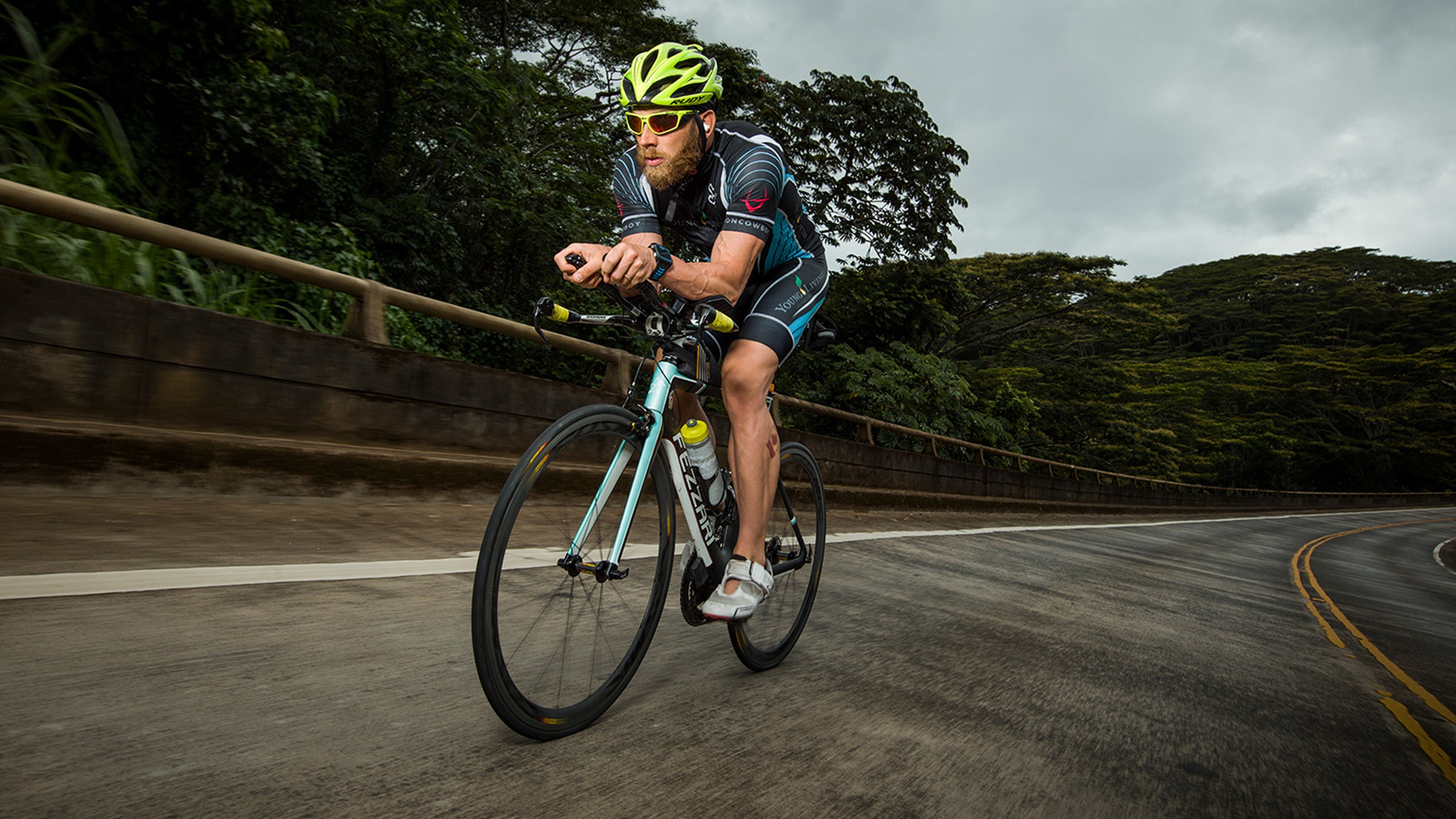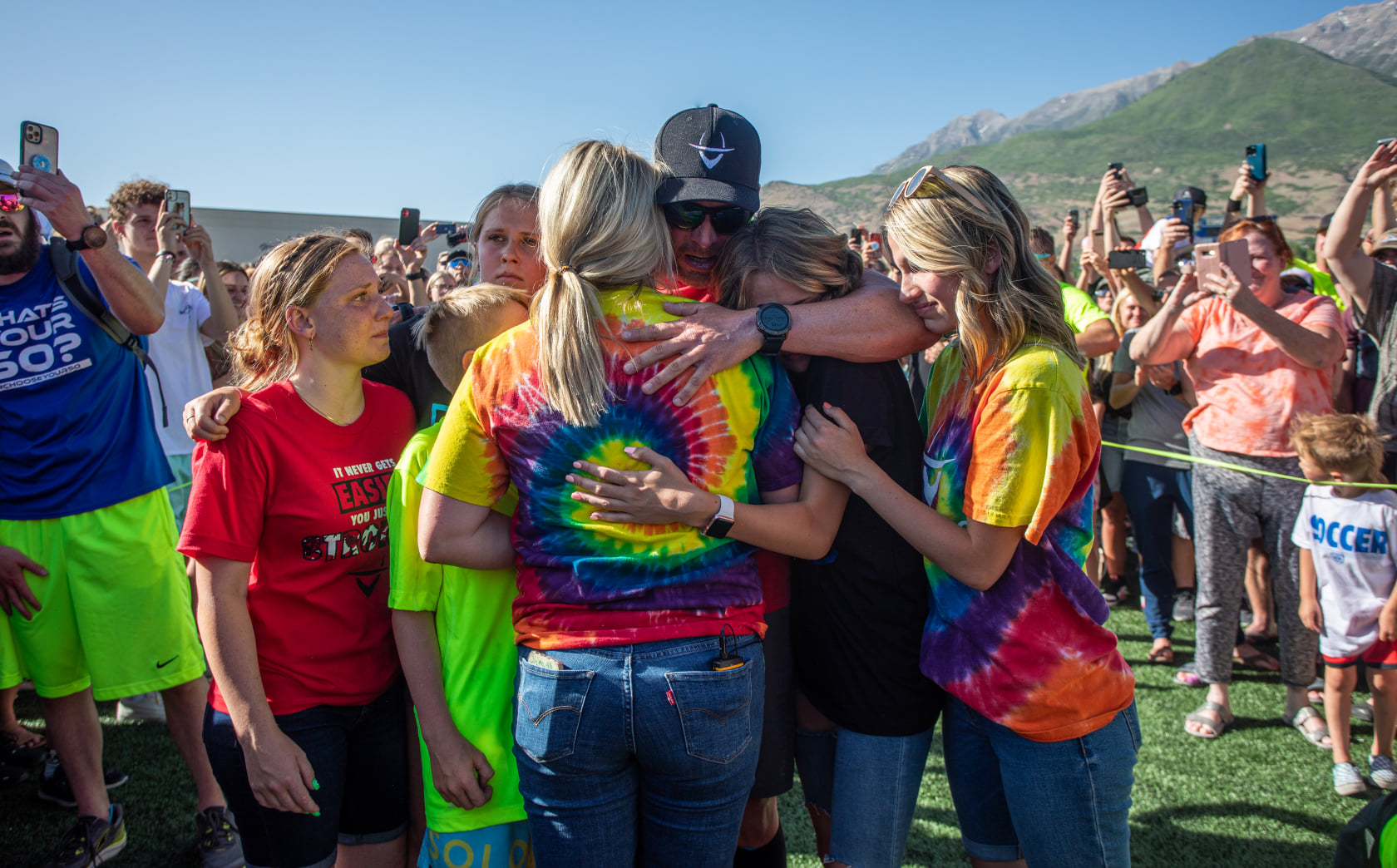
Articles
The Iron Cowboy On Redefining Impossible
October 8, 2021

Not many people can claim to be “one of one,” meaning they’re literally the only person in the history of the world to ever do something. But James “The Iron Cowboy” Lawrence can.
As an endurance athlete, James built a legacy on what he dubs his “gift of suffering.” He currently holds two Guinness World Records for completing the most IRONMANs in one year (30 and 50, respectively).
And he recently completed the Conquer 100 challenge, where he ran 101 IRONMAN-distance triathlons between March and June in 101 consecutive days near his home in Utah. This accomplishment should land him his third world record.
A few months after finishing up the Conquer 100, a clean-shaven, well-rested James sat down with the Trainual team at Playbook 2021, this year’s biggest event in small business. There, he gave us an inside look at how he has built a legacy by redefining what’s impossible.
👉 Want to watch the full interview? You can access all the Playbook 2021 sessions, including this one, on-demand now. Get the replays.
On goal setting
As The Iron Cowboy, James is no stranger to setting massive goals. Each IRONMAN consists of a 2.4-mile swim, a 112-mile bicycle ride, and a 26.2-mile marathon. And completing even one is a feat in its own right. Only about 1% of the population has completed a marathon – let alone a triathlon of this caliber.
When James first set out to earn his first world record, the current best was completing five IRONMANs in one year. And while the average goal-setter would aim to complete a record-breaking six or maybe even 10, James set his sights on completing 30.
“Comparing yourself to others is dangerous because it could limit your true potential.”
~ James “The Iron Cowboy” Lawrence
For James, doing just one better wasn’t enough. “I could have said I’m going to do one more or double the current standard of excellence. But I would have been severely limiting myself,” James explained. “So, I multiplied [the standard of excellence].”
Once that achievement was under his belt, James realized he couldn’t stop there. A few years later, he completed the 50-50-50 (50 triathlons in 50 states in 50 consecutive days). And this past year, he more than tripled his initial achievement with 101 races in 101 consecutive days.

Along the way, James learned that tackling big goals comes down to one key characteristic: belief and convictions. Meaning, when you set a goal, regardless of its size, show up feeling confident in your abilities.
The underlying thought that “I can’t do that” or “but it will be painful” is what keeps most of us from setting scary big goals. But that’s like telling yourself “no” before you even ask: what are the limits of my greatness?
“The only limit to achieving greatness is telling yourself ‘no.'”
That’s not to say you need to set out to run an IRONMAN – you don’t. But whatever your equivalent (writing your first book, making your first million, whatever it is), “you just have to start,” James tells us. “You’re never an expert where you are, so you just have to meet yourself at the beginning.”
On comparing yourself to others
Most success stories are told as if they happened overnight (The Iron Cowboy story included). But in reality, they take years of head-down struggle before they gain momentum. For James in particular, his multiple world records are “15 years worth of sacrificing, learning, and falling on his face.”
However, most people don’t recognize that. They only know the scripted, overnight success version that the media likes telling. So, that’s what people measure themselves up against. James says, as a result, most goal-setters crash and burn, then stay down.
James equates this to aiming for straight A’s in school. “The true secret to success is doing lots of little things consistently over a long time and realizing that you’re not perfect,” he explains. “You’re going to make mistakes along the way.”

Yet, no one ever tells you to aim for a B-plus average. So, most people strive for perfection, only to fail somewhere along the way. When they do, they latch onto that first failure because it’s impossible to come back from an F and still get straight A’s.
“[The straight-A philosophy] just doesn’t work,” James continues. “You have failures and setbacks, and you disappoint yourself.”
On failure
Early on, James recognized that these failures were part of the journey. But he says they’ve made him more adaptable. When bones broke, he missed training days, or sponsorships fell through, James didn’t hang onto the failures.
Instead, he figured out what small solutions he could provide immediately – even if it’s just forgiving himself for needing another rest day. Then, he learned from the mistake and moved on.
“I’ve seen a lot of people fail because they’re too rigid on how they’re going to get there.”
But James doesn’t set master plans for these challenges, outlining every step of the journey. Instead, he writes the goal down for accountability. Then, every morning he looks at that piece of paper and asks: what’s the most important thing I can do today that will get me closer to this goal?
“If I look at [a goal] in its entirety,” James says, “I’m overwhelmed. I’m riddled with anxiety. I can’t do it.”
So, he finds one small win that will get him closer to his goal, and he does that. Then, he does the same the next day and the day after because, for him, “the key is starting and continually showing up.”
On staying focused
Getting started on a goal, however, is the easy part. Where most people fall short is staying focused and following through. For James, this all comes back to setting (and resetting) his “whys.”
“Everybody asks, what’s your reason? What’s your ‘why?'” James explains. “And that’s important, but you can’t just have one reason.” If you do, James promises you’ll quit before you see the goal through.
Whatever your reason is – James insists they need to align with your ethos or what “what you stand for at your core.” And that you need to self-audit throughout the journey that the reason still resonates with you.
Otherwise, when you’re collapsed halfway through, wanting to give up, you might. Because the “why” you’ve been telling yourself won’t justify the pain and sacrifices anymore.
“My ‘why’ during the 50 was very different from my “why” during the 100. My reason for all of these challenges continues to change.”
That’s because why you do something naturally evolves over time. When James first ran the 30, his reason was to remember when he was his daughter’s age, when nothing felt impossible. But his latest Conquer 100 was all about family: “I’ve got five amazing reasons. [My reason right now] is my five kids.”

When he crashed his bike on day 59 of his latest challenge, and most people thought that was it, he got back up. Thinking about setting an example for his kids, he took one painful, slow step at a time until he crossed the finish line that day. But if he was still telling himself it was to do the impossible, he would have stayed on the ground because he had already done that.
On wanting to quit
Even The Iron Cowboy wanted to quit at one point. It was early in his 30-IRONMAN challenge at a race in Texas. James was at mile 17 of the marathon portion, and every muscle in his body locked up at once. He hit the ground.
A friend who was racing alongside him that day came running up behind him. And from the ground, James heard his friend say, “I’ve got great news. I’ve got your wife, Sunny. She’s on the phone.”
Looking down, James tells us, “I knew she was going to tell me to get up, to keep going. So, I looked at [my friend], and I said, no, thank you.”
Minutes later, his friend circles back, the phone still in hand. But this time, James’ 9-year old daughter Lucy was on the other end.
He took the phone and heard his daughter’s voice ask, “is there any way that you can get up? Can you walk?” No. “Can you crawl?” No. “Can you cartwheel 9 miles and finish the race?” And at that moment, James realized that quitting wasn’t an option for her, and it couldn’t be for him either.
“There will be times in life when you think you can’t go further, but you always can.”
So, James pushed himself up, pushed through despite the pain, and cartwheeled over the finish line. Since then, this has become a mantra that gets him through the lowest points in his journey: that the next step might hurt, but it won’t kill you.
Probably “99% of people quit in the moment of pain or struggle because they don’t have their ethos or why,” James explained. “But the next step is where you learn what you’re capable of.”
On doing it on your own
When James reflects on his successes, he has a habit of using “we,” referring to the people who surrounded him on this journey. As far as he’s concerned, these are their accomplishments too.
“I’m not The Iron Cowboy. We, my team, are The Iron Cowboy. I’m just the face of the whole thing.”
That’s because, despite his name being printed in the record books, he could never have done this alone. Each person on the team brought a missing skill needed to pull off these seemingly impossible goals.
“Unfortunately, the gift I [bring to the team] is the gift of suffering,” James explains humorlessly. “But after a lot of soul searching, I found that gift gives people hope.”
But the help of his team is the only way James has been able to share his gift. They’re the ones who figure out the logistics, keep him ready to race, and get him through his lows. And they’re the reason he considers his greatest success serving his team and being someone they can rely on.
“If you show up every single day and try to help everybody around you,” James shares, “there is no way you’re not making it to the top with them.”
Similar Blog Posts












